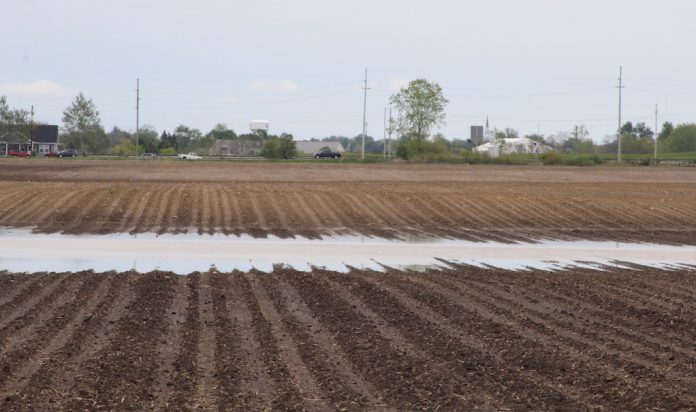SALEM, Ohio — John Motter, a Hancock County grain farmer, has only been able to work three days this spring.
Heavy rainfall this season has Motter and many other farmers far behind on planting.
Ohio has had its wettest 12 months in more than a century, according to the National Oceanic and Atmospheric Administration. In some states, the late planting has reached historical levels. University of Illinois economists reported June 12 that Illinois’ corn planting progress reached the 50% completion mark June 4, the latest date in the last 60 years.
Kirk Merritt, executive director of the Ohio Soybean Association, said Ohio typically has very few prevented planting acres for corn and soybeans, but he expects that to be different this year. He called the situation a “slow-motion disaster.”
“It’s not a tornado or a hurricane, but it has a similar ultimate effect on farmers,” Merritt said.
Weather woes
Motter chose to file claims for prevented planting on most of his corn acres. While he still plans to plant 450-500 acres of soybeans, he may file for prevented planting on some of those acres, if it continues to rain in the next week.
Related article
“The later it gets, the wetter it gets,” Motter said. At this point, “40 bushels is the best we can hope for. It’ll take every bit of that to cancel out the prevented planting payment.”
Unplanted acres
Compounding the situation, the U.S. Department of Agriculture announced June 10 that unplanted acres will not qualify for 2019 Market Facilitation Program payments. U.S. Secretary of Agriculture Sonny Perdue said in a press relaase that only farmers who have planted a 2019 MFP-eligible crop will qualify for a payment.
Perdue said farmers who file for prevented planting and plant a 2019 MFP-eligible cover crop may receive a minimal payment. They must be sure, however, to comply with their crop insurance requirements as well.
Insurance options
Jason Williamson, a northwest Ohio crop insurance agent, has spoken with farmers about prevented planting and how the Market Facilitation Program or other potential disaster aid affects their decisions.
Farmers do not yet know what the payment rates will be for the MFP or other disaster aid, he said, making it difficult to decide whether or not to plant.
“It feels like the weather is ruling over any potential decision folks could be making,” Williamson said.
Trade war
Merritt hopes the USDA will find another way to assist farmers.
“The bigger-picture point I’d make is that we would hope to soon be in a position where we don’t need MFP payments,” Merritt said.
Motter echoed this sentiment. He would prefer trade, rather than a payment.
“If they solve the trade war, it won’t affect farmers at all,” he said about the payments.
“Farmers like to compete,” Merritt said. “Right now, they’re not being allowed to compete.”
Merritt said the Ohio Soybean Association and other partners at the state and federal level are pushing for resolution to the trade war as quickly as possible.
“That would create opportunities for farmers that were there up until a year or two ago and just aren’t there now,” he said. “We really need those markets to be opened up again.”
MFP payment rates
Perdue encouraged farmers to make planting decisions based on what works best for their farm and their markets, regardless of what assistance the USDA provides. Rates and details of disaster aid relief are expected in coming weeks.
Payment rates for MFP will be determined by county, based on the USDA’s assessment of the tariffs’ impact, according to an Ohio Soybean Association.
Disaster aid
Legislators also approved additional disaster aid to compensate losses up to 90%, although the USDA says it is “highly unlikely that the supplemental appropriation will support that level of coverage in addition to crop insurance.”
Acreage in declared disaster areas will be eligible for assistance. Eligibility acreage outside of those areas will be determined on a case-by-case basis.












